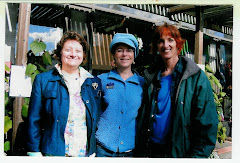| As Pesach flows into Sefirat Ha'Omer, (the cou nting of theOmer), which leads into Shavuot, Jews commemorate the loss of thousands of the students of the great 2nd century sage, Rabbi Akiva. Because of their lack of respect for each other, the students were struck with a terrible plague. On the thirty-third day of the Omer, the plague ended, but nearly all of Rabbi Akiva's 24,000 students had perished. To commemorate the tragic loss of these Torah Scholars, 33 days of the Omer are marked as days of mourning, during which observant Jews refrain from marrying, shaving, cutting hair and listening to live music. nting of theOmer), which leads into Shavuot, Jews commemorate the loss of thousands of the students of the great 2nd century sage, Rabbi Akiva. Because of their lack of respect for each other, the students were struck with a terrible plague. On the thirty-third day of the Omer, the plague ended, but nearly all of Rabbi Akiva's 24,000 students had perished. To commemorate the tragic loss of these Torah Scholars, 33 days of the Omer are marked as days of mourning, during which observant Jews refrain from marrying, shaving, cutting hair and listening to live music. In Hebrew, every letter has a numeric value. The "lamed" equals 30, and the "gimmel" equals 3, thus the name: Lamed Gimmel (L"G) Ba'Omer, literally 33 (days) in the Omer. Rabbi Akiva persevered after this great tragedy and continued to teach those students who had survived the plague, as well as new students. Of his surviving disciples, Rabbi Shimon Bar Yochai is also deeply connected with the thirty-third day of the Omer. Rabbi Shimon Bar Yochai spent his life studying the Kabbalah, the hidden esoteric aspects of the Torah. According to tradition, on the 33rd day of the counting of the Omer, Rabbi Shimon Bar Yochai finished revealing his teachings, recorded in the famed book, the Zohar. He died that evening, and was buried in the cave on Mount Meron, near Safed, where he had lived. There are several customs associated with Lag B'Omer: Bonfires: Families and friends gather together for a bonfire or a picnic on Lag B'Omer, often on Mount Meron. There are several reasons given for this custom. One is that the teachings of Rabbi Shimon Bar Yochai were compiled in the Zohar (which means shining light) and the bonfires bring light to the world. First Hair Cuts: Many have the custom not to cut a boy's hair until he is three years old, the age at which he first begins to learn Torah. Because this idea is tied into Kabbalistic thought concerning hair, many put off the ceremony, called an Upsherin, until Lag B'Omer. Weddings: Because weddings are not held during the mourning period of the Omer, and because of the high spiritual energy of the day, many people choose to get married on Lag B'Omer. Mount Meron: In Israel, tens of thousands of people travel to Mount Meron to celebrate the Yahrtzeit, the anniversary of the death, of Rabbi Shimon Bar Yochai. Per his deathbed request, his death is celebrated, rather than mourned.
Lag B'Omer ("The 33rd Day of the Omer") happens on the 18th of Iyar. The origins of the holiday begin with the time of Rabbi Akiva. The Talmud (Yevamot 62:2) states that 24,000 of Rabbi Akiva's students died from a mysterious plague. The Talmud says that this was because they did not show proper respect to one another. We celebrate Lag B'Omer as the traditional day that this plague ended (Kitzur Shulchan Aruch, 120:1-10. Lag B'Omer is also the Yahrzeit, the anniversary of the death, of the Tanna Rabbi Shimon bar Yohai who authored the Zohar.
Lag B'Omer is a time of dancing and singing. Families go on picnics and outings. Children go out to the fields with their teachers with bows and rubber-tipped arrows. All of the rules of the Omer period are suspended on Lag B'Omer and it is a school holiday in Israel.
On the eve of Lag B'Omer huge bonfires are lit. This is to remind us that during that time there were rules set down by others which told the Jews that they could not mark the new month by lighting bonfires and could not worship HaShem. Shimon Bar Kochba led this revolt against tyranny and the bonfire lighting was reinstituted.
|




No comments:
Post a Comment